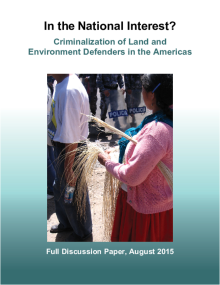Report to the UN Committee on the Elimination of Discrimination Against Women
The Canadian government is not upholding its obligations to protect women against human rights abuses, according to this report by EarthRights International (ERI), MiningWatch Canada, and the Human Rights Research and Education Centre Human Rights Clinic at the University of Ottawa. The report, submitted to the UN Committee on the Elimination of Discrimination against Women (CEDAW), charges that Canada has been supporting and financing mining companies involved in discrimination, rape, and violence against women in their operations abroad, when it should be holding those companies accountable for the abuse.



















